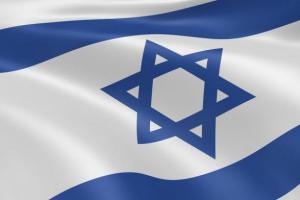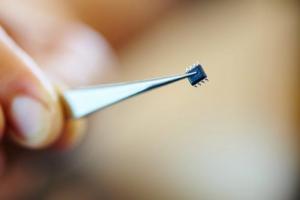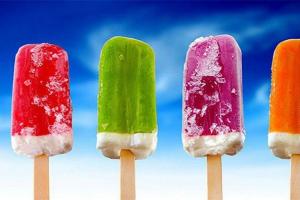We all, or many of us, love bananas and eat them with pleasure. But no one knows what it is. Some people believe that a banana is a berry, others that a banana is a fruit. But not everyone can answer the question – is a banana a grass or a tree?
What plays a cruel joke on us is that we see in cartoons and films where a monkey climbs a palm tree and eats bananas. And therefore we believe that they grow on palm trees, which means a banana is a tree. No matter how it is!

In fact, the banana we love so much is a herb, that is, the fruit of a herbaceous plant. Even though it's called " banana tree“—has nothing to do with trees. In fact, it is a large pile of leaves, on top of which there is something similar to a palm tree. The flower bud grows in a stem that is located right in the middle of these leaves. Another thing is that this grass can grow to quite large sizes, and therefore many people confuse the bush with a palm tree. This is probably the most big plant in the world.

Now let's figure it out: a banana is a berry or fruit. It turns out that banana is a berry. It originated in Southeast Asia and arrived in India thousands of years ago. It is, in fact, one of the oldest known fruits for mankind. Wild banana varieties, found in Malaysia and Southeast Asia, contain large, hard seeds combined with very little pulp. This berry is eaten not only raw, but also boiled, fried, boiled, and even wine is made from it.
By the way, the word “banana” itself is of African origin and is most likely related to the Arabic word “banana”, which means “finger” or “fingers”.
Banana (lat. Musa) is a perennial herbaceous plant that belongs to the flowering department, monocot class, ginger family, banana family, banana genus.
Origin of the word "banana".
Accurate information about the origin Latin definition Musa is not available. Some researchers believe that the banana was named in memory of the court physician Antonio Musa, who served in the service of Octavian Augustus, the Roman emperor who ruled in the last decades BC. e and the first years of our era. According to another theory, it comes from the Arabic word “موز”, which sounds like “muz” - the name of the edible fruits produced on this plant. The concept of “banana” passed into the Russian language as a free transliteration of the word “banana” from the dictionaries of almost all European languages. Apparently, this definition was borrowed by Spanish or Portuguese sailors at the end of the 16th and beginning of the 17th centuries from the vocabulary of tribes living in West Africa.
Banana - description, structure, characteristics and photographs.
Despite the fact that in appearance the banana resembles a tree, in fact the banana is a herb, namely a herbaceous plant with powerful roots, a short stem that does not reach the surface, and 6-20 large leaves. After bamboo, banana is the tallest grass in the world. The banana fruit is a berry.

Trunk and roots.
Numerous fibrous roots that form the root system can spread out to the sides up to 5 meters and go deeper in search of moisture up to 1.5 meters. The false banana trunk, reaching a height of 2 to 12 meters and having a diameter of up to 40 cm, has dense and long leaves, layered on top of each other.
Banana leaves.
Banana leaves have an oblong or oval shape, their length can exceed 3 meters and their width can reach 1 meter. One large longitudinal vein clearly appears on their surface, from which many small perpendicular veins extend. The colors of banana leaves are varied. Depending on the species or variety, it may be completely green, with dark burgundy spots various shapes or two-tone - painted in crimson shades below and rich green tones above. As the banana matures, the old leaves die and fall to the ground, and the young ones develop inside the false trunk. Renewal rate of one banana leaf at favorable conditions happens in 7 days.


How does a banana bloom?
Active growth of bananas lasts from 8 to 10 months, after which the flowering phase begins. At this time, a long peduncle grows from an underground tuberous stem up through the entire trunk. Having made its way out, it forms a complex inflorescence, which in its shape resembles a kind of bud large sizes, painted in purple or green shades. At its base there are banana flowers in tiers. At the very top there are large female flowers that form fruits; below that grow medium-sized bisexual banana flowers, and even lower are small male flowers that have the smallest sizes.



Regardless of size, a banana flower consists of 3 tubular petals with 3 sepals. Most bananas have white petals and white leaves that cover them. outside surface purple, and the inner one is dark red. Depending on the type or variety of banana, there are two types of inflorescences: erect and drooping.
At night, pollination of female flowers occurs by bats, and in the morning and day by small mammals or birds. As banana fruits develop, they resemble a hand with many fingers growing on it.

At its core, the banana fruit is a berry. Its appearance depends on the species and variety. It can be oblong cylindrical or triangular in shape and have a length from 3 to 40 centimeters. Banana skin color can be green, yellow, red and silvery. As it ripens, the hard flesh becomes soft and juicy. About 300 fruits with a total weight of up to 70 kg can develop from one inflorescence. Banana flesh is cream, white, orange or yellow. Banana seeds can be found in wild fruits, but are almost completely absent from cultivated species. After fruiting is completed, the false stem of the plant dies off, and a new one grows in its place.
Banana palm and banana tree. Do bananas grow on palm trees?
Sometimes a banana is called a banana palm, which is incorrect, since this plant does not belong to the palm family. The banana is a fairly tall plant, so it is not surprising that many people mistake it for a tree. The Greeks and Romans spoke of it as a “wonderful Indian fruit tree” - hence, by analogy with others fruit trees The expression “banana palm” has spread to this region.
The phrase “banana tree,” which is sometimes called a banana, actually refers to plants from the genus Asimina, family Annonaceae, and is associated with the similarity of the fruits of these trees with the fruits of a banana.
A banana is not a fruit, a tree, or a palm tree. In fact, a banana is a herb (herbaceous plant), and the banana fruit is a berry!

Where do bananas grow?
Bananas grow in countries of the tropical and subtropical zone: in South Asia, Latin America, Malaysia, northeastern Australia, and also on some islands of Japan. The banana plant is grown on an industrial scale in Bhutan and Pakistan, China and India, Sri Lanka and Bangladesh, the Maldives and Nepal, Thailand and Brazil. In Russia, bananas grow naturally near Sochi, however, due to the fact that winter temperatures often fall below zero degrees, the fruits do not ripen. Moreover, under prolonged unfavorable conditions, some plants may die.

Banana composition, vitamins and minerals. What are the benefits of bananas?
Bananas are considered low-fat, but quite nutritious and energy-rich foods. The pulp of its raw fruits consists of a quarter of carbohydrates and sugars, and a third of dry substances. It contains starch, fiber, pectin, proteins and various essential oils, giving the fruits a characteristic aroma. Banana pulp contains minerals and vitamins that are useful and necessary for the human body: potassium, magnesium, phosphorus, calcium, iron, sodium, copper, zinc, as well as vitamins B, E, C and PP. Thanks to the unique chemical composition The plant has found application in medicine.

How many calories are in a banana?
Data per 100 grams of product:
- calorie content of green banana – 89 kcal;
- calorie content of a ripe banana – 110-120 kcal;
- calorie content of an overripe banana – 170-180 kcal;
- calorie content of dried banana – 320 kcal.
Since bananas vary in size, the calorie content of 1 banana varies between 70-135 kilocalories:
- 1 small banana weighing up to 80 g and up to 15 cm long contains approximately 72 kcal;
- 1 medium banana weighing up to 117 g and more than 18 cm long contains approximately 105 kcal;
- 1 large banana weighing more than 150 g and more than 22 cm long contains about 135 kcal.
Energy value of a ripe banana (ratio of proteins, fats, carbohydrates) (data per 100 g):
- proteins in banana - 1.5 g (~6 kcal);
- fats in banana - 0.5 g (~5 kcal);
- carbohydrates in a banana - 21 g (~84 kcal).
It is important to note that bananas do not cope well with hunger, increasing it after a short-term satiety. The reason lies in the significant sugar content, which rises in the blood and after a while increases appetite.

Beneficial properties of banana. Use of bananas.
So what are bananas good for?
- Banana pulp is used to relieve inflammatory processes occurring in the oral cavity, and also as a dietary product in the treatment of stomach ulcers and duodenum. In addition, banana is a laxative and is therefore used as a mild laxative. Due to the presence of tryptophan, an amino acid that prevents cell aging and has a beneficial effect on brain function, bananas are recommended for consumption by older people. The presence of potassium and magnesium allows them to be used as a means of preventing high blood pressure and stroke.
- Banana flower infusion helps in the treatment of diabetes and bronchitis. The juice obtained from banana stems is a good anticonvulsant and sedative.
- The invaluable benefits of bananas are concentrated in the peel. Banana skins are used in medicinal purposes. Compresses from young leaves or banana peels promote rapid healing of burns and abscesses on the skin.
- Banana peels are used as fertilizer for both indoor and outdoor flowers. The point is that it contains a large number of phosphorus and potassium. Using banana peels you can also fight aphids, which cannot tolerate excess potassium. To do this, you just need to make a tincture on banana skins and water the plants with it. The easiest way to use banana peels to fertilize flowers is to simply bury them in the ground. To do this, just cut the peel into small pieces. After this procedure, even the most tired plants begin to leaf out and bloom. Banana peels take 10 days to decompose in the ground, after which bacteria eat them.
- The benefits of bananas are invaluable: even overripe bananas produce a very powerful antioxidant that prevents cancer.

Residents of countries located in temperate latitudes enjoy eating raw peeled bananas as dessert and adding them to ice cream and confectionery. Some people prefer dried and canned bananas. This berry is also fried and boiled with or without peel, adding salt, hot spices, olive oil, onion or garlic. Bananas can be used to make flour, chips, syrup, marmalade, honey and wine. In addition to the fruit, banana inflorescences are also eaten: raw inflorescences are dipped in sauce, and boiled ones are added to gravies or soups. Starch is prepared from unripe banana fruits. Boiled waste from vegetable and dessert bananas is used as feed for large and small livestock.
The fruits and other parts of the banana are used:
- in the leather industry as a black dye;
- in the textile industry for the production of fabrics;
- for the production of especially strong marine ropes and ropes;
- in the construction of rafts and the manufacture of seat cushions;
- as plates and trays for serving traditional South Asian dishes in India and Sri Lanka.


Bananas: contraindications and harm.
- It is not advisable to eat bananas before bed, or combine them with milk, so as not to provoke fermentation in the stomach and cause intestinal dysfunction.
- To people suffering diabetes mellitus, eating bananas is prohibited because they contain little glucose and fructose, but a lot of sugar.
- Bananas can cause harm to people who suffer from thrombophlebitis, as these berries help thicken the blood.

Types and varieties of bananas, names and photographs.
The genus includes about 70 species of bananas, which, depending on their use, are divided into 3 varieties:
- Decorative bananas (inedible);
- Plantains (platano);
- Dessert bananas.

Decorative bananas.
This group includes plants with very beautiful flowers and mostly inedible fruits. They can be wild or grown for beauty. Inedible bananas are also used to make various textile products, car seat cushions and fishing nets. The most famous types of decorative bananas are:
- Pointed banana (lat.Musaacuminata) grown for its beautiful leaves up to one meter long with a large central vein and many small ones, along which the leaf blade divides over time, acquiring a resemblance to a bird’s feather. The leaves of the ornamental banana are dark green; specimens with a reddish tint are often found. In greenhouse conditions, the height of a pointed banana plant can reach 3.5 meters, although in room conditions it grows no more than 2 meters. The size of the fruits of this type of banana ranges from 5 to 30 centimeters, and their color can be green, yellow and even red. The pointed banana is edible and grows in Southeast Asia, southern China, India and Australia. In countries with colder climates, this type of banana is grown as a ornamental plant.


- Blue Burmese banana (lat.Musaitinerans) grows in height from 2.5 to 4 meters. The banana trunk is colored in an unusual purple- green color with silver-white coating. The color of the leaf blades is bright green, and their length on average reaches 0.7 meters. The thick skin of banana fruits is blue or purple in color. The fruits of this banana are unsuitable for food. In addition to its decorative value, blue banana is used as one of the components of the diet of Asian elephants. Banana grows in the following countries: China, India, Vietnam, Thailand, Laos. This plant can also be grown in a pot.


- Velvet banana (velvety, purple, pink) (lat.Musavelutina) has a false trunk height of no more than 1.5 meters with a diameter of about 7 centimeters. Banana leaves, colored light green, grow up to 1 meter long and 30 centimeters wide. Many specimens have a red border along the edge of the leaf blade. The petals of the inflorescences, pleasing with their appearance for up to six months, are painted purple-pink. The pink banana peel is quite thick, and their number in a bunch does not exceed 9 pieces. The length of the fruit is 8 cm. When ripe, the skin of the fruit opens, revealing light pulp with seeds inside.
This variety of banana is used in decorative purposes. Can survive a not very cold winter. This banana is also unique in that it will bloom and bear fruit freely almost all year round at home.


- Banana bright red (Indochinese banana) (lat.Musacoccinea) is a representative of low-growing plants. Its height rarely exceeds one meter. The shiny surface of the narrow bright green banana leaves emphasizes the beauty of the juicy scarlet or red inflorescences. The flowering period of banana lasts about 2 months. Grown as an ornamental plant to produce beautiful orange-red flowers. The homeland of the Indochinese banana is Southeast Asia.


- Darjeeling banana (lat.Musa sikkimensis) grows up to 5.5 meters in height with a false trunk diameter at the base of about 45 cm. The color of this decorative banana can have a red tint. The length of the gray-green leaves with purple veins often exceeds 1.5-2 meters. Some varieties of Darjeeling banana have red leaf blades. Banana fruits are medium-sized, up to 13 cm in length, with a slightly sweet taste. This species is quite frost-resistant and can withstand temperatures down to -20 degrees. Bananas are grown in many European countries.


- Japanese banana, Basho banana or Japanese textile banana (lat. Musa basjoo)- a cold-resistant species, reaching a height of 2.5 meters. The surface of the banana false trunk is colored in greenish or yellowish shades and covered with a thin wax-like layer, on which black spots are visible. The length of the leaf blades does not exceed 1.5 meters in length and 60 centimeters in width. The color of banana leaves varies from rich dark green at the base of the leaf to pale green at the tip. The Japanese banana grows in Japan, as well as in Russia on the Black Sea coast. It is inedible and is grown mainly for its fiber, which is used for the production of clothing, screens, and book bindings.

- Textile banana, abaca (lat.Musatextilis) grown to make strong fibers from leaf sheaths. The height of the false trunk does not exceed 3.5 meters, and the diameter is 20 cm. Narrow green leaves rarely reach a length of more than one meter. The fruits, which develop on a drooping raceme, have a triangular appearance and sizes up to 8 centimeters. Inside the pulp there are a large number of small seeds. The color changes from green to straw-yellow as it ripens. Textile banana is grown in the Philippines, Indonesia, and Central American countries to produce durable fiber from which baskets, furniture and other utensils are woven.



- Banana Balbis (fruit) (lat. Musa balbisiana) is a large plant with a false stem height of up to 8 meters and a diameter at the base of more than 30 centimeters. Its color varies from green to yellow-green. The length of banana leaves can exceed 3 meters with a width of about 50-60 centimeters. The leaf sheaths are colored bluish and are often covered with fine hairs. The fruit sizes reach 10 centimeters in length and 4 cm in width. Banana skin color changes with age from light yellow to dark brown or black. Banana fruits are used as pig feed. Unripe fruits are canned. The male flower buds are eaten as a vegetable. The Balbis banana grows in India, Sri Lanka and the Malay Archipelago.


Platano (plantains).
Plantain (from the French plantain) or platano (from the Spanish plátano) are quite large bananas, which are mainly (90%) eaten after heat treatment: they are fried in oil, boiled, baked in batter, steamed or cooked of which are chips. The peel of the sycamore tree is also used for food. Although there are types of sycamore that, when fully ripe, become softer, sweeter and edible even without prior heat treatment. The skin color of sycamores can be green or yellow (although they are usually sold greenish); ripe sycamores have a black skin.

Plantains differ from dessert bananas in their thicker skin, as well as in tougher and almost unsweetened pulp with high content starch. Platano varieties have found application both in the human menu and in agriculture, where they are used as livestock feed. In many countries of the Caribbean, Africa, India and South America, dishes prepared from platano are served as side dishes for meat and fish or as a completely independent dish. They are usually generously seasoned with salt, herbs and hot chili pepper.
Types of sycamore intended for heat treatment are divided into 4 groups, each of which has different varieties:
- French sycamores: varieties ‘Obino l’Ewai’ (Nigeria), ‘Nendran’ (India), ‘Dominico’ (Colombia).
- French carob-shaped sycamores: varieties ‘Batard’ (Cameroon), ‘Mbang Okon’ (Nigeria).
- False carob-shaped sycamores: varieties ‘Agbagda’ and ‘Orishele’ (Nigeria), ‘Dominico-Harton’ (Colombia).
- Horn-shaped sycamores: varieties ‘Ishitim’ (Nigeria), ‘Pisang Tandok’ (Malaysia).
Below is a description of several varieties of sycamore:
- Ground banana (banana da terra) grows mainly in Brazil. The length of the fruit often reaches 25-27 cm, and the weight is 400-500 grams. The peel is ribbed, thick, and the flesh has an orange tint. In its raw form, platano is slightly astringent in taste, but after cooking it acquires excellent flavor characteristics. The leader among platanos in the content of vitamins A and C.


- Plantain Burro (Burro, Orinoco, Horse, Hog)- a herbaceous plant of medium height, resistant to cold. Sycamore fruits are 13-15 cm long, enclosed in a triangular peel. The pulp is dense, with a lemon flavor, and is edible raw only when overripe, so the variety is usually fried or baked.

- - a plant with large fruits up to 20 cm in length. The peel is greenish in color, slightly rough to the touch, thick. In its raw form it is inedible due to its strongly astringent taste, but is perfect for preparing all kinds of dishes: chips, vegetable stews, mashed potatoes. This type of plane tree grows in India, where it is in unprecedented demand among buyers in ordinary fruit shops.

Dessert bananas.
Dessert varieties of bananas are eaten without heat treatment. In addition, they can be stored for future use by withering or drying. The most famous species of this group is banana of paradise (lat. Musa paradisiaca). It grows up to 7-9 meters in height. The thick, fleshy banana leaves are 2 meters long and green in color with brown spots. The ripe fruit reaches a size of up to 20 cm with a diameter of about 4-5 cm. Up to 300 banana berries can ripen on one plant, the pulp of which contains practically no seeds.

Almost all species are artificially cultivated. Among them, the following dessert varieties of bananas are widely used:
- Banana variety Lady Finger or Lady Finger with a rather thin false trunk reaching a height of 7-7.5 m. These are small bananas, the length of which does not exceed 12 cm. The skin of this banana variety is light yellow with thin red-brown streaks. One bunch of bananas usually contains up to 20 fruits with creamy flesh. Widely cultivated in Australia and also common in Latin America.

- up to 8-9 meters high and large fruits that have a thick peel yellow color. The size of a banana fruit can reach 27 cm and weigh more than 200 grams. Banana pulp has a delicate creamy consistency. The Gros Michel banana variety tolerates transportation well. Grows in Central America and Central Africa.

- Banana variety Dwarf Cavendish(Dwarf Cavendish) - low (1.8-2.4 m) plant with wide leaves. The size of banana fruits varies from 15 to 25 cm. Their ripening is indicated by the bright yellow color of the peel with a small number of small brown spots. Grows in Western and South Africa, as well as in the Canary Islands.

- Banana variety Ice Cream(IceCream, Cenizo, Krie)- a rather tall plant with a false trunk height of up to 4.5 meters and elongated fruits of a four or five-sided shape with dimensions up to 23 cm. The color of the peel of an unripe banana has a bluish-silver tint. As they mature, the color of the skin becomes pale yellow. Grown in Hawaii, the Philippines and Central America.

- Banana variety Red Spanish is characterized by an unusual purple-red color not only of the false stem, leaf veins, but also of the peel of an unripe banana. As it ripens, the skin turns orange-yellow. The height of the plant can reach 8.5 meters with a trunk diameter at the base of about 45 cm. The size of the fruit is 12-17 cm. These red bananas grow in Spain.

Growing bananas. How do bananas grow?
Most comfortable conditions for growing bananas, the daytime temperature is in the range of 26-35 o C and the night temperature, ranging from 22 to 28 o C. When the temperature drops environment up to 10 o C growth stops completely. Strictly defined humidity has no less influence during the entire life cycle of a plant. Long dry periods can lead to the death of the plant. The best places For organizing banana plantations, fertile acidic soils rich in micro and macroelements are needed.

To control weeds that interfere with normal growth cultivated plants, use not only herbicides, but also mulching the root zone with finely chopped fallen leaves. The use of geese, which readily eat juicy green weeds, but are absolutely indifferent to bananas, brings good results. To restore soil fertility, bananas are fertilized with mineral supplements. Depending on the condition of the soil, nitrogen, phosphorus or potassium fertilizers are used.
From the moment a banana is planted until the end of fruiting, it usually takes from 10 to 19 months. To prevent the plant from breaking due to the weight of the ripening fruits, supports are installed under the hands during banana ripening. Bananas are harvested when the crop is no more than 75% ripe. In this state, it is cooled and transported to the consumer. Ripe bananas stored in a special gas-air mixture at a temperature of no more than 14 o C retain their presentation and taste for 50 days.

Growing bananas at home.
Many types of bananas can be cultivated in a greenhouse or even an apartment. For home grown best fit low-growing varieties banana with variegated decorative leaves and beautiful flowers. For the plant to feel comfortable, it needs a special substrate consisting of a mixture universal primer, perlite and finely chopped pine, fir or spruce bark.
Watering a banana.
Homemade banana is very demanding of moisture, but you should not over-water the plant. It is not recommended to place indoor banana near batteries central heating or heating devices. To create the necessary humidity, the leaves and false trunk of the banana are sprayed with a spray bottle. For irrigation, settled water with a temperature of 25 o C is used. Watering must be carried out without allowing the substrate to dry out by more than 3 centimeters. During the winter months, banana watering is limited.
Fertilizer for indoor banana.
To provide homemade banana with microelements, root and leaf feeding is carried out. It is advisable to alternate the use of mineral and organic fertilizers. In any case, you should not feed the plant more than once every 2 weeks. Root loosening of the soil, which provides free access of oxygen to the roots of the plant, has a good effect on the growth of bananas.

Propagation of bananas (vegetative and seeds).
Bananas reproduce:
- seeds;
- vegetative method.
It is worth noting that the same plant grown various methods, will have different characteristics.
Growing a homemade banana is quite easy. A banana grown from seeds is more viable, but the plant will take a long time to develop and produce inedible fruits. First, banana seeds need to be germinated. To do this, their surface is carefully treated sandpaper or a nail file (a couple of scratches will be enough) so that the sprout can break through the hard shell. Be careful - there is no need to pierce the seed. Then the seeds are soaked in boiled water for several days until sprouts appear. The water must be changed every 6 hours.


The best container for planting bananas is a shallow pot with a diameter of about 10 centimeters. It is filled with drainage (a layer of expanded clay) 2 cm high and a 1:4 sand-peat mixture 4 cm high. To plant banana seeds, they need to be lightly pressed into the surface of the moistened soil, without covering them with soil. After this, cover the container with transparent film or glass and put it in a well-lit place, away from direct contact. sun rays. The temperature in the container should be between 27-30 degrees during the day and 25-27 degrees at night. As the substrate dries, it is moistened with a spray bottle. Some gardeners prefer not to remove the film from the container and moisten the substrate through the bottom of the container. If mold appears on the soil, it is necessary to remove it and water the substrate with a solution of potassium permanganate.
The first banana shoots appear after 2-3 months. From this moment, active growth of the plant begins, and after 10 days it can be transplanted into a larger pot. As the banana grows, it needs to be transplanted into a larger pot.

Vegetative propagation of bananas.
A faster and more reliable way to obtain a plant with edible fruits is vegetative propagation. After fruiting ends, the false stem of the banana dies off, and new buds begin to develop from the underground stem to replace it. A new “trunk” grows from one. At this time, you can remove the rhizome from the container and carefully separate the piece with the awakened bud from it. This banana sprout needs to be transplanted into a prepared pot. As the plant grows, it needs to be transplanted into a larger container. It has been established that by the time of fruiting the volume of the pot should be at least 50 liters.
- Among the world's agricultural crops, banana ranks fourth in popularity after wheat, rice and corn. The total number of bananas eaten per year by the world's population exceeds 100 billion.
- The islands of the Malay Archipelago are the birthplace of the banana. Residents of the archipelago have been growing this berry since ancient times and eating it along with fish.
- The first mention of the plant as an edible fruit appeared between the 17th and 11th centuries BC. e. in the Indian written source Rig Veda.
- In the collection Ramayana (Indian epic of the 14th century BC), one of the books describes the clothes of the royal family, which were woven from threads obtained from banana leaves.
- The Goldfinger banana variety, grown in Australia, has fruits that resemble apples in structure and taste.
- If you compare a banana and a potato, it turns out that the calorie content of a potato is one and a half times lower than that of a banana. And raw bananas are almost 5 times less caloric than dried ones. Among the products prepared from this fruit, banana juice is the lowest in calories.
What family does banana belong to?
- It belongs to the banana family.... But actually, it’s just a grass, nothing more... Only tropical... That's why the fruits are so large.... You're in middle lane Can you imagine our herbs? You can eat them too, the tops... And they’re very tasty, I can assure you... It's just a bit small... :))))
- to herbaceous
- family of bananas.... close relatives of the skins....
- BANANA (Musa), a genus of large tropical perennial herbs banana family (Musaceae), numbering approx. 300 species and taxa of lower rank, a number of which are widely bred for their edible berry-like fruits, reaching a length of 20 cm. When ripe, the fruits are covered with a thick yellow skin with brown spots. Their pulp is creamy, easy to digest, rich in carbohydrates and contains relatively high amounts of vitamins A, B and C.
- To the family "below the belt" =)))
- Scientific classification
Kingdom: Plants
Department: Angiosperms
Class: Monocots
Order: Ginger
Family: Banana
Genus: Banana
Bana#769;n (lat. Musa) is a genus of perennial herbaceous plants of the Banana family, native to the tropics of Southeast Asia (SEA) and, in particular, the Malay Archipelago. Bananas are also called the fruits of these plants that are eaten. Currently, various varieties of sterile triploid cultigen Musa #215; paradisiaca ( artificial look, not found in the wild), created on the basis of some species of these plants, are widely cultivated in tropical countries and in many of them constitute an important share of exports. Banana is the fourth largest crop grown in the world, second only to rice, wheat and corn. 1 The genus includes over 40 species, distributed mainly in Southeast Asia and the Pacific Islands. The northernmost species of Japanese banana (Musa basjoo), native to the Japanese Ryukyu Islands, is grown as an ornamental plant on the Black Sea coast of the Caucasus, Crimea and Georgia.Description
Banana is a herbaceous plant with a powerful root system, a short stem that does not protrude above the ground and 620 leaves, the sheaths of which form something like a trunk. The height of the plants varies from 2 to 9 m and even higher, making them one of the tallest (along with bamboos) grasses in the world; and it is not surprising that many people mistake them for trees. The tallest plant of the banana genus is considered to be the species Musa itinerans, the height of its variety Musa itinerans var. gigantea can reach 12 m. Many side shoots are formed around the main stem, one of which subsequently replaces the previous one, thus reproduction occurs. The roots are numerous and fibrous; in noble soil they go up to 4.9 m to the side and up to 1.5 m deep.The leaves are large, soft, smooth, oblong or oval, with parallel veins; arranged in a spiral. Their vaginas are rolled into a dense, multi-layered, fleshy tube called a false stalk. As the plant grows, young leaves appear inside the bunch, and the outer ones gradually die and fall off. In good weather this process continues at a rate of about one leaf per week. Cultivated banana leaves reach 275 cm in length and 60 cm in width, they can be completely green, green with dark burgundy spots, or green on the upper side and purple below. When there is strong wind or rain, the leaves are easily torn along the veins; this adaptation helps plants survive in tropical climates. When the banana is ready to bloom, a long peduncle develops at the growing point of the short stem, which passes through the false stem and follows the leaves out.
Flowering occurs 810 months after active growth plants. The inflorescence is a brush, resembling an elongated lush bud of a purple or green hue, on which at the base there are large female ones, then smaller bisexual ones, and at the end small male flowers. All flowers are tubular, consist of 3 petals, 3 sepals, usually 6 stamens, one of which is underdeveloped and does not have an anther. The gynoecium is syncarpous, consisting of 3 carpels forming a three-chambered ovary; the flowers are arranged in tiers (the so-called arms) and contain a large amount of nectar (up to 0.5 g per flower. Each layer is collected in a raceme, consisting of 1220 flowers, arranged radially, and covered with fleshy, waxy to the touch covering leaves. cultivated banana flowers white, the covering leaves are purple on the outside and dark red on the inside. Having opened, the male flowers usually fall off very quickly, leaving the upper part of the inflorescence bare, with the exception of the apical unopened bud. In wild species, flowering begins at night or early in the morning; in the first case, pollination is facilitated by the bats, and in the second there are birds and small mammals.
Wild fruit in cross section
Fruits develop
Sometimes people have questions that surprise them. For example, the question: is a banana a fruit or a berry? The question may also arise: is a banana a grass or a tree? In this article we will look at the essence of these issues.
Let's start with the definition of fruit. Fruit is a concept most likely culinary and household than botanical. Fruit refers to all the sweet, large fruits of plants. Therefore, in everyday life, a banana is, of course, a fruit. But in the culinary and everyday concept, a berry is all small fruits of plants, so in everyday life a banana cannot be a berry.
In botany under the word “fruit” the word “fruit” is used. A fruit is a plant reproductive organ formed from a flower that contains seeds. The fruits are different. One type of fruit is a berry. In botany, a berry is understood as the fruit of a plant with a thin skin, juicy pulp and seeds. Store-bought bananas have no seeds, but wild bananas contain black seeds. It turns out that bananas meet these criteria. Bananas are berries.
Banana grass or tree?
As for the question of whether a banana is a tree or a grass, everything is simple. Bananas are giant perennial herbs. Each banana shoot bears fruit only once, then it dies and a new shoot grows in its place.
At least once in his life, every adult, identifying a banana, asked the question: “Is a banana a fruit or a berry?” In ancient times, the fruit from the “black” continent of Africa was simply an overseas delicacy. And no one delved into its origins. Today it is a common dessert on the table of any European. Moreover, it is an essential ingredient in many recipes for baking, salads, confectionery, and drinks. Therefore, the question of what a banana is is very relevant.
What does a banana grow on: a tree or grass?
Banana is considered a fruit by those who define it as the fruit of tree growth. Since bananas grow on trees of the same name, they are considered a fruit. Because of this, there is also an opinion that banana is a herb. After all, visually a “banana tree” looks like a large herbaceous plant. Plus, human taste buds sometimes identify a banana by its taste closer to grass (especially if the fruit is unripe). Of course, the option that banana is a berry deserves attention. After all, when choosing among the main types of fruits - berries, vegetables and fruits, purely visually, a banana looks like a peculiarly shaped berry.
We need to figure it out. Fruits are juicy fruits that can be eaten. Fruits grow on bushes and trees. The banana is not particularly juicy. It's rather meaty. In addition, the plant on which bananas grow looks more like grass. That is, a herbaceous plant. On such a plant, only berries can be fruits. But visually, for most people, berries are round or cone-shaped fruits such as strawberries, raspberries, and blueberries. Banana is completely different in appearance. That’s why the question constantly arises: “Is a banana a fruit or a berry?”
Grass is considered a representative of the flora that has a dense stem without bark and wood. And the fruits appear directly as branches from the stem. According to botany, although herbaceous plants bear fruit, they die after the fruits ripen. This does not happen with the banana tree. The fruiting period reaches up to a century. Likewise, the trunk consists of tightly compressed leaves, and not wood fiber. The banana blooms according to the season, and later the fruits appear and ripen. Afterwards the stem dies. But the next year a new young stem grows from the root and everything repeats again.
Growing bananas
The culture of growing elongated yellow fruits dates back more than one century. Even though bananas cannot be grown from the seeds inside, “banana trees” grow from their roots into huge stems year after year.
The main question about banana ownership

You can argue endlessly about whether a banana is a fruit or a berry. But in any case, it is worth remembering the main points:
- banana does not grow on bushes and trees,
- banana grows on herbaceous plants that have a dense stem of many leaves,
- Only berries grow on grass, fruits grow on trees,
- fruits – juicy fruits with seeds and skin,
- berries are fleshy fruits with many seeds and a leathery shell.
“The misconceptions surrounding the classification of banana as a fruit are due to a lack of knowledge. Most people believed that bananas grew on palm trees. And these palm trees are called “banana trees.” But in reality, bananas grow on herbaceous plants, essentially on huge grass, which only visually resembles a tree. Science does not know “banana trees” as a plant species. Therefore, resolving the dispute is simple. Berries grow on grass, so a banana can only be a berry and nothing else.”
Video: Banana
Related materials:
 It is impossible to imagine our diet without vegetables and fruits, because they contain a huge amount of vitamins and useful substances. One of the favorite fruits of many people is pineapple, but the question still arises: is pineapple a fruit or a berry? http://columbusprco.ru/ History...
It is impossible to imagine our diet without vegetables and fruits, because they contain a huge amount of vitamins and useful substances. One of the favorite fruits of many people is pineapple, but the question still arises: is pineapple a fruit or a berry? http://columbusprco.ru/ History...
 What do grapes belong to, is it a fruit or a berry, what are the beneficial properties of grapes? Grapes are a berry that is distinguished by its species diversity, beneficial properties, taste characteristics and areas of application. General characteristics of grapes Species diversity of grapes...
What do grapes belong to, is it a fruit or a berry, what are the beneficial properties of grapes? Grapes are a berry that is distinguished by its species diversity, beneficial properties, taste characteristics and areas of application. General characteristics of grapes Species diversity of grapes...








